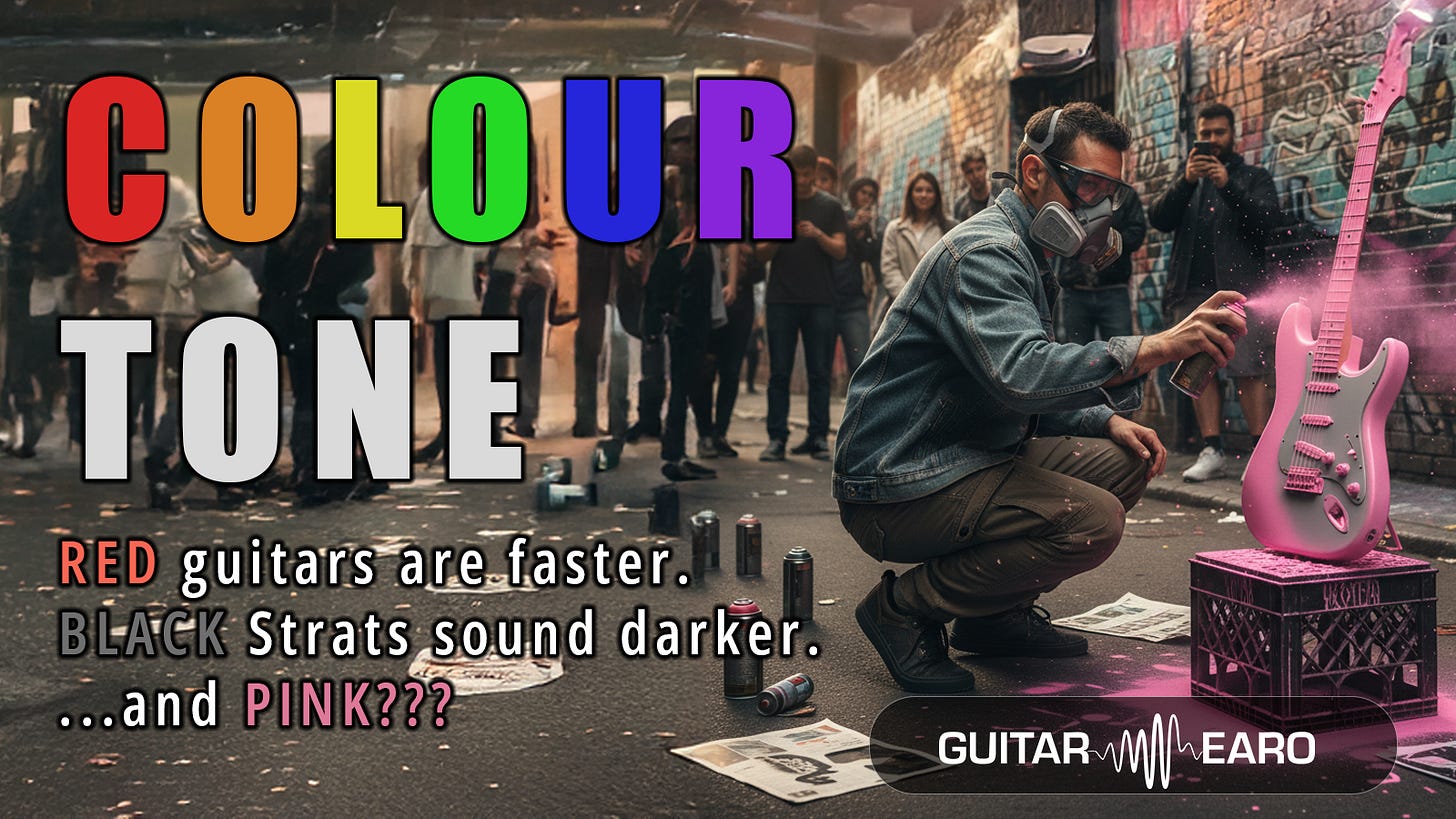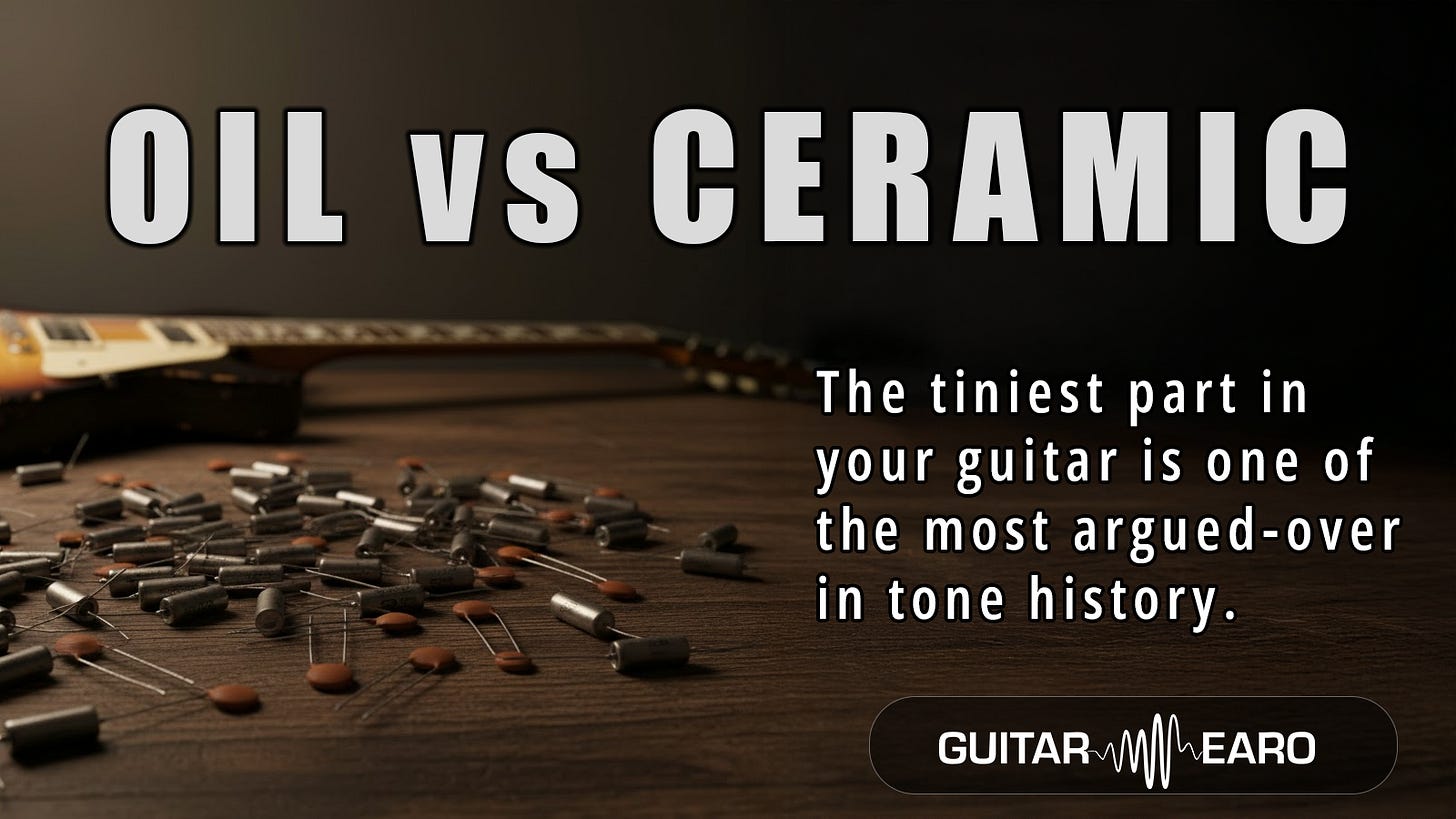“Red guitars are faster.”
“Black Strats sound darker.”
“Fiesta Red has mojo.”
Most guitarists know these lines as running jokes. Yet like so many myths in guitar culture, there’s a small grain of truth buried in the humour.
Let’s unpack it properly.
The Origins of the Joke
Colour/tone myths have been around since the early 1960s. When Fender introduced custom-colour finishes (Olympic White, Lake Placid Blue, Fiesta Red), players began trading not just guitars, but stories:
“My Fiesta Red Strat sings differently than my Sunburst.”
“The black ones sound darker.”
This was tongue-in-cheek, of course. But as always in guitar culture, once a myth exists, people will debate it to death.
The Physics of Finishes
The important fact: colour pigment itself does not affect tone.
Paint is not acoustically active in the way that wood resonance or pickup design is. But finish thickness can matter.
Fender’s Sunburst finish in the late ’50s and early ’60s typically involved fewer coats.
A custom colour (say, Fiesta Red) involved an undercoat (often white), a colour coat, and a clear nitro top. That could add ~2–4 extra mils of lacquer thickness compared to a Sunburst.
Thicker finish = more damping of body vibration.
We are talking tiny effects here. Measured differences in resonance Q-factor between thick poly vs thin nitro are small but real. Blind tests suggest only the most golden-eared might hear it. But among obsessives, “small” is enough to fuel debate .
Nitro vs. Poly: Why Thickness Matters More Than Chemistry
The nitro vs poly debate has been raging for decades. Purists argue nitro lets the wood “breathe,” while poly “encases” and damps resonance.
The real story is subtler:
Thick finish (often ’70s Fenders in polyester) could measurably reduce high-end resonance.
Thin finish (earlier nitro) added less damping.
Custom colours often meant thicker coats, regardless of nitro vs poly. So a Fiesta Red Strat from 1962 might be fractionally more “muted” than a 3-tone Sunburst of the same year, not because of pigment, but because of extra material on the body.
Pigments in Plastic Parts: Where Colour Did Change Tone
There is one area where colour chemistry touched tone: pickup covers and hardware plating.
Gibson’s nickel vs gold plating had measurable effects. Gold plating involved a thicker layer and slightly different conductivity. Some players felt gold-covered humbuckers were “mellower” compared to nickel.
Fender’s early Telecaster neck pickup covers were brass under chrome, which capacitively rolled off highs. Later nickel-silver covers were more transparent. Here, the material (linked to colour) had a clear tonal effect.
So in plastics and metals, colour → composition → conductivity → subtle tonal shift.
Individual Variation: The Real Culprit
In reality, differences between guitars of the same model and year swamp any finish-thickness effect.
Wood density, neck pocket tightness, pickup wind variance, and bridge mass all make far bigger differences. If your Lake Placid Blue Strat sounds more “open” than your Olympic White, it is almost certainly that guitar and not the paint.
Why the Myth Persists
Culture loves a joke. “Red guitars are faster” is fun to say and bonds guitarists.
Obsession trickles down. Once someone notices thicker clear coat on a custom colour, it becomes a “thing.”
Confirmation bias. If you expect your black Strat to sound darker, you might just hear it that way.
Real but tiny effects. Finish thickness can alter vibration, so the myth isn’t 100% nonsense.
The Takeaway
Paint pigment ≠ tone.
Finish thickness = subtle but measurable damping.
Hardware colour (plating, covers) sometimes does alter response.
The rest is cultural myth-making: guitarists love to argue, even about colour.
In the end, the “colour debate” is less about physics than about the culture of obsessive detail that defines guitar tone fandom. We will joke about anything, because in tone-land, everything is worth debating.
And that is why the myth endures.



